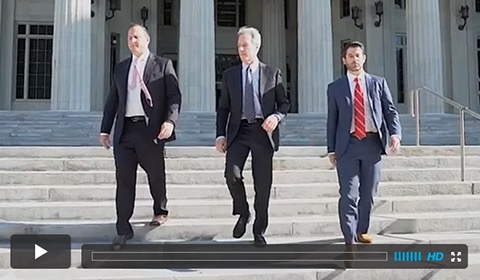To Prevent Spoliation in Tire Cases Use Preservation Letters
We have previously written that the three principle do’s for tire failure cases are: 1) preserve the evidence; 2) preserve the evidence; and 3) see rules numbers one and two. This is because, except for in rare cases, product defect allegations, including tire defects cannot be proven without the product being available for forensic inspection by experts.
Preserving the evidence means, that where possible, the evidence is obtained, and placed into storage in a fashion that will prevent the product from deteriorating. For tires and motor vehicles, this typically means placing the items in dry storage under lock and key.
If the product is altered, lost, or damaged, the party who had responsibility for possession and control of the product may be charged with spoliation. Spoliation is defined by Black’s Law Dictionary as the “intentional or negligent withholding, hiding, altering, or destroying of evidence relevant to a legal proceeding.” If a court determines that a party is guilty of spoliation of evidence the court may strike the pleadings of the party guilty of spoliation, or instruct the jury that the jury may infer that the evidence would have provided damaging evidence against the party guilty of spoliation.
Florida injury attorneys have followed a long line of cases which have developed the law of spoliation in Florida, and which currently require a showing of the following:
- The item lost, damaged, altered, or destroyed is usually the product alleged to be defective;
- The subject product lost, damaged, altered, or destroyed was in the possession or control of the party charged with spoliation;
- Some legal duty required the party charged with spoliation to protect and preserve the product. This legal duty may occur after litigation is initiated by virtue of court orders, by contract, or by other factors which may impose a duty; and
- The loss, damage, alteration, or destruction of the physical evidence or defective product renders the injured party incapable of going forward with their case and establishing liability.
Miami tire lawyers must be alert to send out preservation letters at the early stage of their engagement in a tire defect case or other product liability case. In a typical rollover event initiated by the failure of a defective tire, the vehicle is initially placed in storage by the investigating police department or Florida Highway Patrol. Thereafter the vehicle is moved out of this temporary storage facility to another storage facility typically controlled by the insurance company for the owner of the subject vehicle. During this early phase of the case, when the matter is still being investigated, it is wise to direct a preservation letter to any person or entity who may have some control over the condition of the subject vehicle and its component parts including any failed tire or detached pieces of tread.
For these reasons, tire defect lawyers should consider writing a preservation letter to the investigating police department, any tow yard where the subject vehicle or component parts are being stored, the owner of the vehicle, the insurance company for the owner of the vehicle or any other person or entity which may exercise some type of control over the vehicle and its component parts. Thereafter, efforts should be made to purchase for salvage value whatever evidence remains, and move the evidence into protected dry storage.
A preservation letter should include the following information:
- A clear identification of the subject vehicle;
- A request that all measures be taken to preserve the critical evidence, subject vehicle, tires and other component parts;
- A clear statement that failure to preserve such critical evidence may result in a claim for spoliation of evidence;
- An offer to assist in preserving the evidence by taking whatever measures are necessary to preserve the critical evidence, including an offer to pay for any outstanding storage charges or any other charges associated with properly preserving the evidence;
- An offer to take possession of the critical evidence and take responsibility for it;
- A request that the critical evidence be moved into secure indoor storage space; and
- A request that the attorney be contacted to arrange for transfer of the critical evidence to the attorney in exchange for payment of the salvage value.
Critical evidence has an uncanny way of going missing. Many times critical evidence is lost or destroyed unintentionally during these early phases of a case because what may appear as junk to one man may be invaluable evidence to another.
Advising those in possession and control of the critical evidence about the significance of preserving the evidence with a proper preservation letter will help ensure that the evidence is not lost, altered, or destroyed; and a legal duty may be created so that a claim for spoliation of evidence is preserved against any party who allows for the destruction of evidence after receiving a preservation letter.














